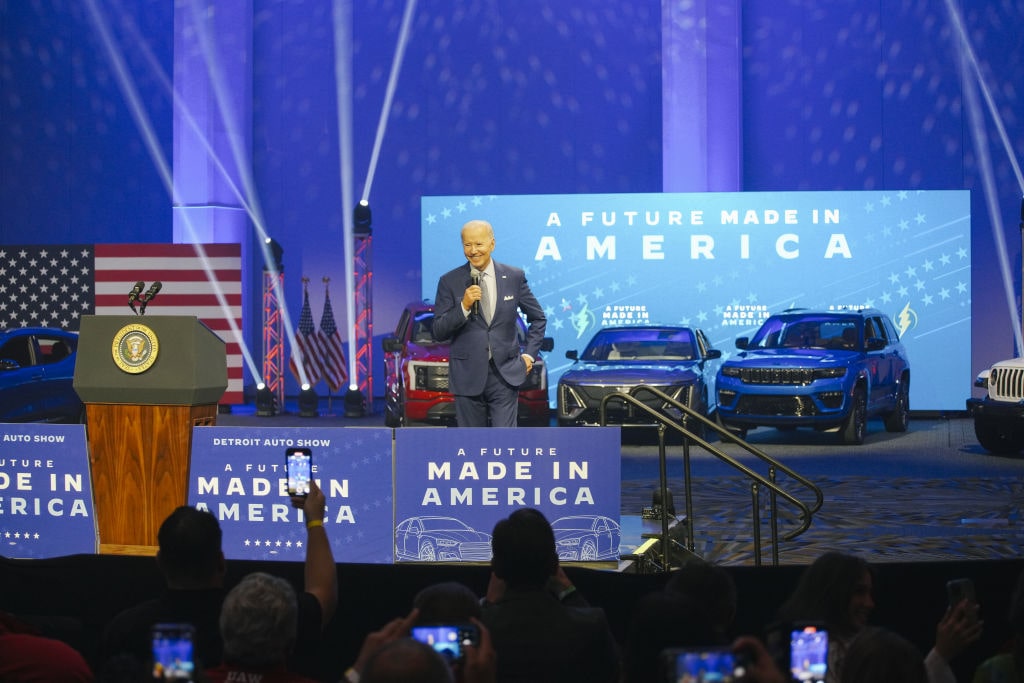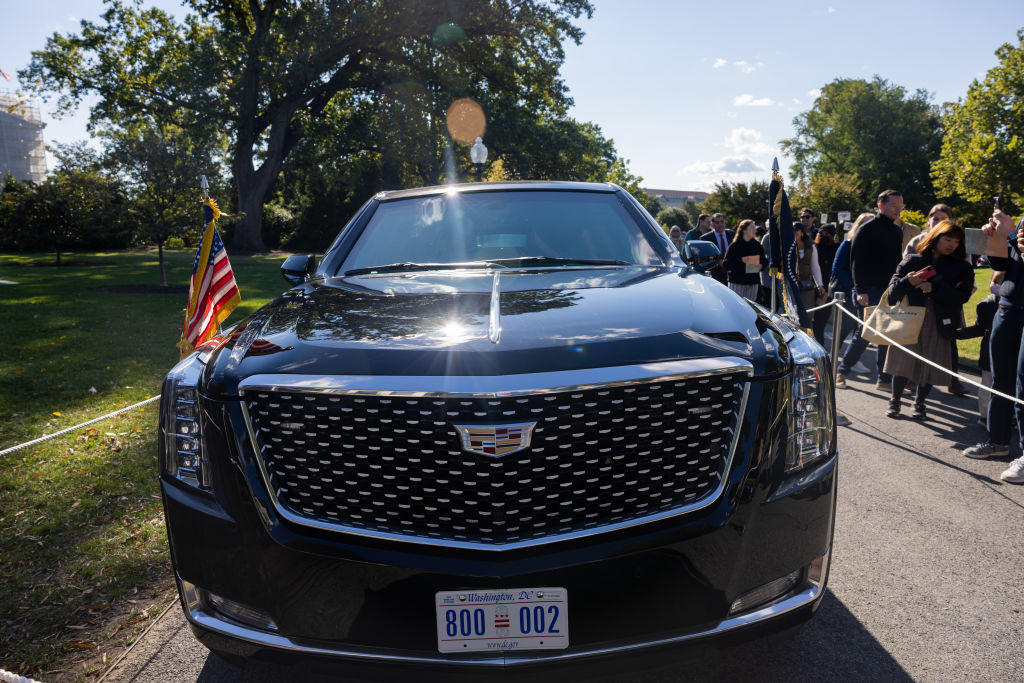
The White House announced a new rule Thursday, December 14: “Federal employees will rent an EV on official travel when the cost of the EV is less than or equal to the most affordable comparable vehicle available.” There’s more, but in short, government workers are now being directed to travel by electric vehicle rather than the old internal combustion engine – but only when it’s convenient to do so. How’s that for commitment to the cause?
Setting aside the proclamation’s obvious flaws, however, one might wonder how this affects the everyday citizen. The latest directive is just another step toward the Biden administration’s larger goal of phasing out gas burners – a progressive dream that could be a nightmare for Americans should it ever come true.
New EV Mandate – Just a Bunch of Hot Air?
According to a press release from the White House, federal employees took more than 2.8 million flights, 2.3 million vehicle rentals, and 33,000 rail trips in 2022. The commander-in-chief hopes to do things differently moving forward – or so he claims. “President Biden’s Federal Sustainability Plan aims to reach net-zero emissions from overall Federal operations by 2025, including a 65 percent emissions reduction by 2030,” the presser states. To help make that happen, federal employees are now directed to opt for electric rentals and rideshare options whenever it won’t cost more, ride the rails rather than fly when the trip is under 250 miles, and take public transportation whenever possible for local travel.
But will this new mandate really have the effect the president seems to hope for? A closer look at the text clearly shows that folks are off the hook for going electric whenever there isn’t a rental or rideshare of equal or lesser cost. A look at Uber in Washington, DC, shows that “Comfort Electric” is the third most expensive ride behind “Black” and “Black SUV,” the two luxury options with professional drivers. EV rentals in the nation’s capital are also just a little more expensive than their fossil-fueled alternatives. So when will government employees actually be forced to go electric? Unless the pricing changes in the near future, that would be never.
The Real Effects on the Ground
Perhaps the biggest practical effect will come from the prohibition on federal employees driving their own personal vehicles for official business. While it may be entertaining to imagine government workers forced to take public transportation rather than riding in style and comfort, a far less amusing reality awaits. While many will probably take public transportation, a sizeable portion of those forced out of their privately owned vehicles will likely rely on rideshares and rentals, tanking availability and driving up both prices and wait times for everyone. And it’s not like this rule affects “The Big Guy,” members of Congress, or other Swamp elites who play by their own rules; they’re still tooling about in gas-guzzling SUVs and limos and flying around on private jets.

The Beast (Photo by Nathan Posner/Anadolu Agency via Getty Images)
What’s worse, none of this is likely to save taxpayers any money, as fueling up a private vehicle is always cheaper than renting a ride – since one must still pay for fuel – or hiring someone else to drive. And so long as combustion-powered rideshares and rentals remain less expensive than EVs, there probably won’t be a net drop in emissions, either. More money for less efficiency – it seems this rule is par for the course when it comes to government “solutions.”
Lofty Dreams, High Costs
The new directive is just a drop in the bucket, though – one small step toward the green dream of the Biden administration and progressives at large. But a look at the bigger picture shows some of those same problems scaled up, and more.
The federal government maintains a fleet of some 650,000 vehicles, all of which Biden promised at the beginning of his term to replace with electric models. No time frame was given, and according to Reuters, replacing them all in one go could cost as much as $20 billion. Then there’s all the charging stations that must be in place before the government can expect to run on an electric fleet. By May of 2023, there were somewhere around 138,100 public places to charge an EV in the US – and about 44,600, or nearly a third of them, were in California.
The president plans to increase the number of public chargers to 500,000 by 2030, an ambitious plan that will consume insane amounts of tax revenue. That’s money American workers must fork over whether they drive an EV or not; a Gallup poll from March shows that only 4% of the population does. If taxes don’t increase, then the money must be pulled from some other public work that might actually prove useful for the 96% of Americans who don’t own an EV.
The Bigger Picture – An Even Bigger Disaster
Ever heard the term rolling blackout? It’s an intentionally engineered shutdown in which power is cut for a time over different parts of the distribution area. This method is a last resort when demand for electricity exceeds the power supply capacity of the network to avoid crashing the whole grid. It happens in the summer when it’s hot and it happens in the winter when it’s cold.
Now imagine these periods of extreme heat or cold – when it’s vital to be able to heat or cool a home – while the federal government is trying to charge more than half a million EVs.
Even if the lights don’t go out, the costs will go up. In addition to cutting service when necessary, utility companies have a bad habit of jacking up the per kilowatt cost of electricity when demand is high across the board. In other words, when everyone else is running their air conditioners on full blast in August, you’re paying more for your power even if you’re sweating under a ceiling fan with open doors and windows.
But wait, there’s more.
According to Consumer Reports, EVs have 79% more reliability issues than gasoline or diesel vehicles on average – and plug-in hybrids fare even worse with 146% more breakdowns. Never mind the wasted time and money whenever a government employee is left waiting on a tow and a ride, imagine what this would mean for the timely delivery of the mail. And everyone had best hope local emergency services don’t make the switch!
While it’s far less of an inconvenience than losing power or being priced out of electric service all together, there’s still another unintended consequence of the Biden administration’s EV movement. Auto manufacturers have been pumping out electric cars in droves, fueled by government subsidies – yet another drain on the taxpayer – and promises that car lots will be moving the products as fast as they can get them.

(Photo by Scott Olson/Getty Images)
Remember that Gallup survey? About 4% of Americans own EVs, but Biden expects half the new cars sold by 2030 to be electric. Already, dealerships are stocking more electric models, and now consumers face a dwindling supply of gas and diesel options while sellers are stuck with inventory that no one seems to want. “You can subsidize a buyer into an auto showroom, but you can’t make him buy,” read the opening line to a report in The Wall Street Journal last month after about 3,900 car dealers across the country wrote to the White House, complaining of EVs piling up on the lot and begging President Biden to pump the breaks on the unrealistic sales mandate.
Roads clogged with broken-down electric vehicles, loss of residential electricity and higher light bills to boot, failed government services, more taxes paid in for less actual benefit for the vast majority of the population … yes, a progressive government solution if ever there was one. But like most statist dreams, it could prove a nightmare for the rest of us.
No comments:
Post a Comment